Futbol Culture
Football has been a staple and highlight of Peruvian culture throughout its history. On all levels, from children to adults, from amateur to semi-pro and professional, the love for football is undeniable across the country. Since the nineteenth century, when the country was first exposed to the sport through British immigrants and Peruvians coming back from England, Peru has not let go and has cultivated the sport into everyday life, having been successful in forming their professional football league. Just like the United States with its Major League Soccer, or Spain with its La Liga, Peru’s Liga 1 unites its citizens every single time its teams play. Professional teams like Alianza Lima, Sporting Cristal, and Sport Boys have shown their talents around South America for many decades.1
Peruvian Talent
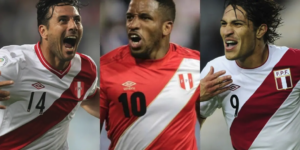
Throughout the years, there have been various local talents that have been recognized from foreign countries, showing the world what prime Peruvian athleticism looks like. Examples are the forward Gerónimo Barbadillo, who was recognized by Mexico in the 1970s at a young age, and midfielder José Velásquez. The two players carried out their careers in foreign countries. The most recent player of the twenty-first century is none other than Claudio Pizzaro, known in Germany as “Der Andenbomber,” which means the Andean Bomber. Given this nickname, due to his incredible goals scored throughout many important matches, Claudio Pizzaro reached the pinnacle of his career playing in countries like Germany, playing within the most prestigious league in the country, the Bundesliga. In addition, he has also played in England for Chelsea F.C. in 2007 in the Premier League, competing against Cristiano Ronaldo and Wayne Rooney’s Manchester United. Claudio Pizzaro was one of the first modern players to be given the chance to show off his talents in foreign countries, laying the framework for younger athletes to do the same. For example, Jefferson Farfan and Paolo Guerrero, two modern players who helped the Peruvian National Team reach the 2018 Russia World Cup, developed their careers in Lima. Both played for the previously mentioned team Alianza Lima, when they were just nine years old, beginning in the U10 academy and going through the professional process until reaching the first team. Alianza Lima brought them together and created a long-lasting friendship seen still today between both players. It did not take long until both Jefferson Farfan and Paolo Guerrero brought the attention of foreign scouts for big-name football clubs. Dutch football club PSV Eindhoven signed Farfan at just twenty years of age. Later on, the Peruvian player went to Germany to play for FC Schalke 04 in the Bundesliga. Farfan dominated in Germany and his childhood best friend Paolo Guerrero came to join in 2003 when he signed with FC Bayern in Munich. Both players competed against each other and played together when called up to represent their country. To both individuals, playing in Germany and making millions of euros did not compare to playing for their own country. This is a shared and common feeling among many Peruvian football players: the passion for representing their country on an international scale. As expressed in the beginning, in Peru, football is loved on all levels, ranging from children to adults to professional players. Nothing is better for a Peruvian than seeing their national team compete against big names like Brazil and Argentina. To understand this feeling better it is important to look back at Peru’s national team experience with the FIFA World Cup competition.2
Past World Cup Presence
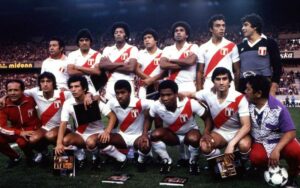
1982 marked Peru’s last World Cup appearance for many years. Four years before, in the 1978 World Cup competition held in Argentina, Peru played horrendous football, only beating Iran four-to-one out of all the games they played. This caused them to be eliminated from the group stage known as the knockout stage. The next four years seemed normal, as national teams practiced together for the 1982 World Cup. Peru qualified again, but this was going to be the last time for a long time that they would have this feeling. Fans expected their home countries to qualify for the World Cup since it is the norm for a country to do so every four years. In the case of Peru, this train of thought ended with the transition from 1978 to 1982. Peruvian fans around this time were very certain that the national squad would qualify once more for the upcoming World Cup tournament. They were right, as the 1982 Peruvian National Team traveled to the United States to participate in the tournament. Even though they qualified, 1982 was not a good year for Peru in the World Cup since they got eliminated in the very first round just like Argentina. Peruvian fans held their hopes and expectations high, believing that the national team would qualify once more for the 1986 World Cup held in Mexico. From 1982 to 1986, the same pattern was played out: star players reunited with their national team teammates to practice and train for the upcoming World Cup. Peru was no exception, younger players like Gerónimo Barbadillo and José Velásquez who played for their national team were older and much wiser. They were the Peruvian citizen’s hope and saviors. The years passed and the qualifiers came around, and countries began to compete against one another to see who would make it onto the World Cup roster. Peru would disappoint their fans by not qualifying for the 1986 tournament. The following World Cup qualifiers would play out the same; Peru would once again not qualify. Fans would maintain that level of disappointment for thirty-six years.3
Last Rounds of the 2018 Qualifiers
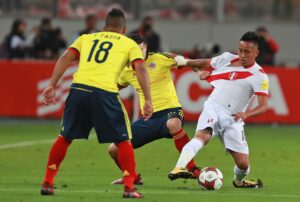
Year after year, Peruvian fans would lose faith in their national team. Players like Paolo Guerrero and Jefferson Farfan would continue to show off their impeccable skills for their professional clubs but would fail to perform at the same level for the national squad. Needless to say, whenever the 2018 FIFA World Cup Qualifiers arrived, fans did not have high hopes. Some people even believed that Peru would finish the qualifiers at the end of the table as they did during the 2010 FIFA World Cup Qualifiers. The outcomes of the first games in the qualifying tournament for the 2018 squad were not favoring Peru. For this reason, the last rounds of games required multiple teams to play effectively, forcing them to limit their chances of mistakes. The first team to qualify was Brazil beating Chile three to zero, followed by Uruguay who also qualified. Then Argentina qualified after a three-to-one win against Ecuador. This left Peru to face off against Colombia and Chile at a great disadvantage because their qualification depended on the outcome of Peru’s game. The rule was that if Peru lost against Colombia, then they would be eliminated and not qualify for the World Cup, giving Colombia a one-way ticket to Russia. Additionally, a Peruvian loss would allow Chile to continue fighting to qualify, as they would face off against New Zealand in the final game. The other outcome was that if Peru and Colombia tied, Chile would instantly be eliminated, Colombia would qualify regardless, and it would be Peru playing New Zealand in the final game. October 10, 2017, was the day Colombia traveled to the Estadio Nacional located in Lima. Peru kicked off the game with the first possession of the game. The whole first half of the match displayed two equally talented teams hungry to make it to the World Cup competition. Both teams put up a solid fight, leading to a zero-zero score when it was time for halftime.4
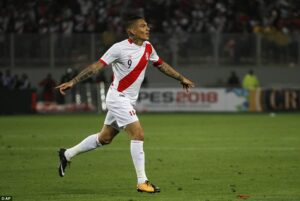
Later on, Colombia started the second half with first possession. The game continued to be played at the same level by both parties. Peruvian players like Christian Cueva tried all sorts of tricks to pass through the backline of Colombian defenders, but it seemed impossible. Colombian players attacked and attempted to score but Peruvian goalkeeper Pedro Gallese was a human wall, not letting any ball through. Then, in the 55th minute of the match, Colombia’s goalkeeper David Ospina punted the ball so far that it landed only yards away from Peru’s goalposts. Peruvian defenders scrambled to clear the opponent’s ball away, but James Rodriguez beat them to it, as he scored the first goal in the game with his right foot. The tension increased and was felt throughout the whole stadium. Peru was once again going to disappoint their loyal fans with another loss and failed qualification. Minutes passed, and the clock got closer to the 90th minute. In the 77th minute, Peru’s strikers were fouled on Colombian territory. The referee called for a free-kick. Paolo Guerrero was going to be Peru’s hope. He placed the ball down behind the area marked by the referee and took a couple of steps back from the ball. What were seconds seemed like hours, and every fan in the whole stadium got quiet to see what would happen. The referee blew his whistle and Paolo Guerrero sprinted towards the ball, kicked, and scored. Peru was now back in the game as well as the tournament; what seemed impossible at first was now achievable. If they maintained the score tied or even scored another and beat Colombia, they would play New Zealand and eliminate Chile. The Peruvian manager, Ricardo Gareca, decided to defend their point and aim for a tied game. Both teams continued to fight and in the 93rd minute, the whistle was blown, indicating the end of the match and the elimination of Chile. Colombia qualified and Peru was given one more opportunity.5
The Miracle
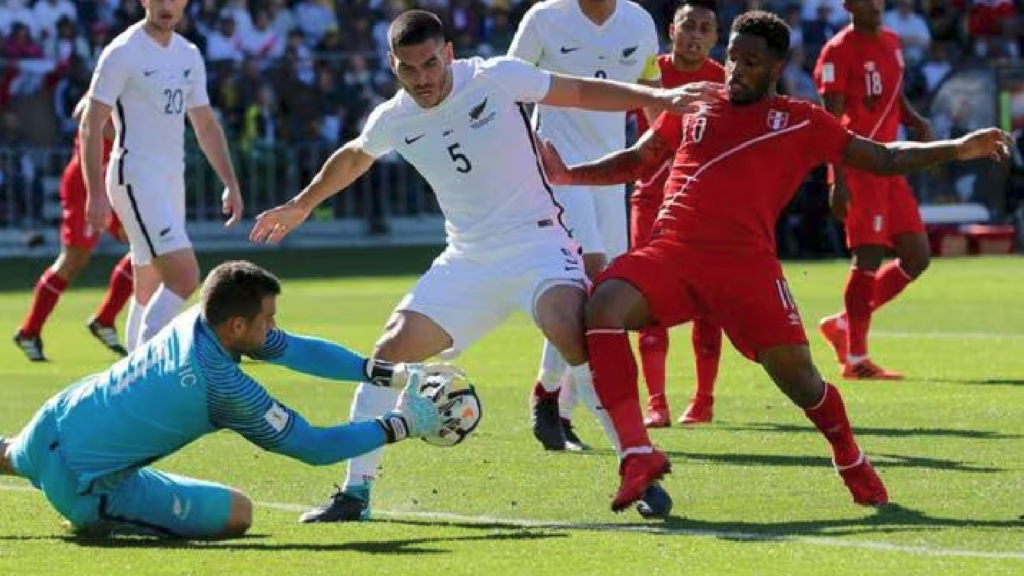
New Zealand was the last obstacle that remained, and they were given two chances to win and qualify. The reason for this is that there were two set fixtures, meaning two games to play: one held in New Zealand and the other in Peru. The Peruvian National team flew to New Zealand days before the match. The first game was set to be played on November 11, 2017. The weather conditions on the day of the match were beautiful, with a clear sky looking down at the professional football players and fans. Peruvian fans were spotted by cameras as both excited and nervous. The game began and both teams did not score a single goal during the first half, despite many chances to score. Both team’s goalkeepers were in excellent form, saving the powerful shot attempts from strikers like Jefferson Farfan and Kosta Barbarouses. Halftime arrived with no goal on the scoreboard. The second half began and players on both teams seemed to replicate their first-half performance, not scoring any goal until the match finished. The first game between New Zealand and Peru concluded with a draw.
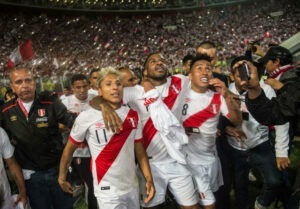
Now it would be New Zealand traveling to South America to carry out the second game. November 15 was the day of the second match and the pressure was felt all over their national stadium. The match kicked off, with Peru having the upper hand as their fans cheered with positivity. The first goal was scored by Jefferson Farfan around the 20th minute of the first half, placing his nation a step closer to the World Cup held in Russia. Although Peru was up by one, every fan shown on television was even more tense, because New Zealand could equalize at any moment. Peru switched their tactics from attacking and attempting to score to a more defensive approach in hopes of defending their one-goal lead. The first part of the game concluded with Peru being on top, and fans were already seen crying. They did not believe how close their country was to qualifying for the World Cup. In the second half, Raul Ruidiaz stripped each New Zealand fan’s feelings of hope in the stadium when he scored in the second half. Being two goals up calmed the Peruvian players down, as they switched back to their defensive strategy to maintain their lead. The whistle blew in the 95th minute, concluding the game, and every Peruvian fan realized the miracle that had occurred. Members of the 1982 Peruvian football team were present that night and shed tears as the new generation brought joy to Peru.6
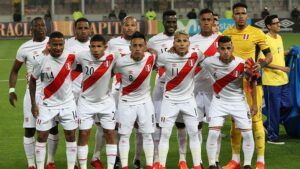
Road to Russia
36 years of absence from the world’s most prestigious tournament, “Peru showed the world that perseverance is key when attempting to achieve your goals,” Daniel Alarcón, a sports analyst, stated during an interview regarding Peru’s performance.7 That evening, the professional national football team made history, instilling in everyone a sense of passion for the beautiful national squad. Past generations were in awe of what this new and younger generation of players achieved. It was safe to say that the national team fire was rekindled that evening. Peru went on to participate in the 2018 Russia World Cup tournament, giving their fans another reason to become even more proud of their roots.8
¡Vamos Peru!
- Tariq Panja, “After a 36-Year Wait, Peru Wants to Enjoy Itself,” The New York Times Company, June 17, 2018. ↵
- Daniel Alarcón, “Peru’s World Cup Team,” NPR, June 17, 2018. ↵
- Daniel Alarcón, “Peru’s World Cup Team,” NPR, June 17, 2018. ↵
- Christopher Carey, “Peru’s 36-Year Drought To Last a While Longer,” The New York Times Company, June 22, 2018. ↵
- Christopher Carey, “Peru’s 36-Year Drought To Last a While Longer,” The New York Times Company, June 22, 2018. ↵
- Christopher Carey, “Peru’s 36-Year Drought To Last a While Longer,” The New York Times Company, June 22, 2018. ↵
- Daniel Alarcón, “Peru’s World Cup Team,” NPR, June 17, 2018. ↵
- Tariq Panja, “After a 36-Year Wait, Peru Wants to Enjoy Itself,” The New York Times Company, June 17, 2018. ↵
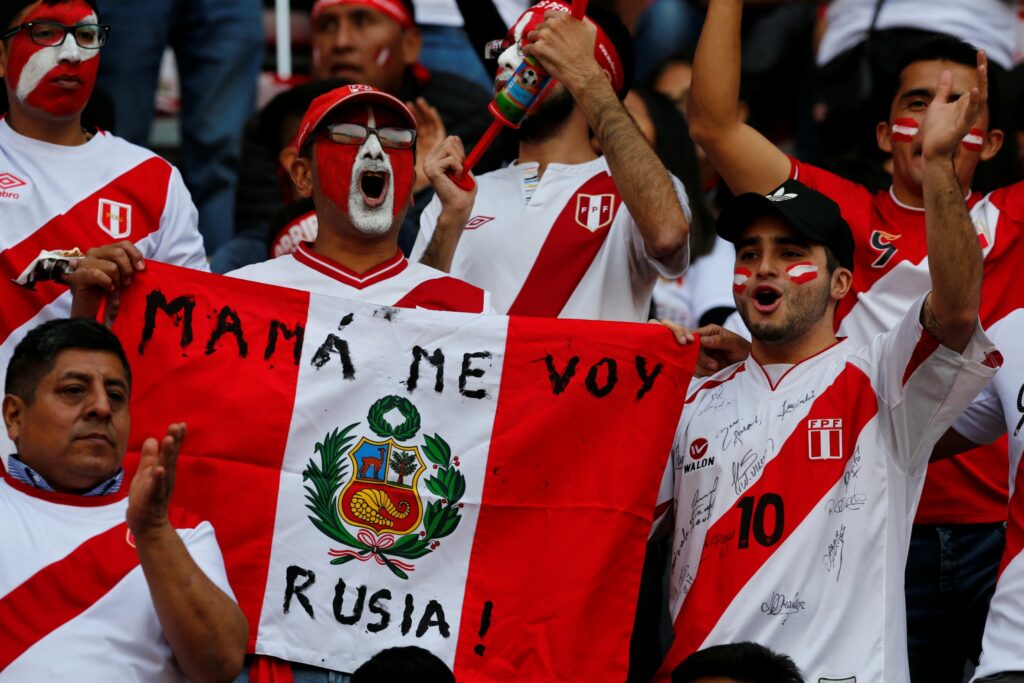


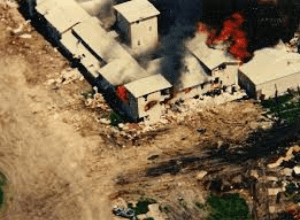
5 comments
Sebastian Hernandez-Soihit
Futbol’s proven ability to connect countries with each other has never ceased to Amaze me. Indeed, soccer is extremely important for latin American culture beyond Peru and it is a source of extreme national pride and excitement. Very interesting story and a mere sample of the power of sports!
Maria Fernanda Guerrero
Peru’s journey to the 2018 World Cup was and is still impressive. As a soccer fanatic, I love learning about soccer and its rich history. Soccer has impacted many cultures like it did with Peru and thanks to soccer I believe Peruvians have cultivated a stronger sense of community. Your vivid storytelling portrayed the true passion of Peruvian football culture. Congratulations on your nomination Gonzalo.
Ana Barrientos
Hi Gonzalo! I enjoyed reading this article, I don’t know to much about futbol but I enjoyed learning about Peru’s National Team and overcoming not being able to advance. They were able to play in the 2018 World Cup in Russia which must’ve been great for so many Peruvian fans! I also liked the images you used, overall great job!
Carlos Dieguez
Road to Russia was not easy, but we went after so many years. Great piece of info about Peruvian fútbol. Arriba Perú!
Muchas gracias
RICARDO IZQUIERDO CASTRO
ARRIBA PERU!! ALWAYS…